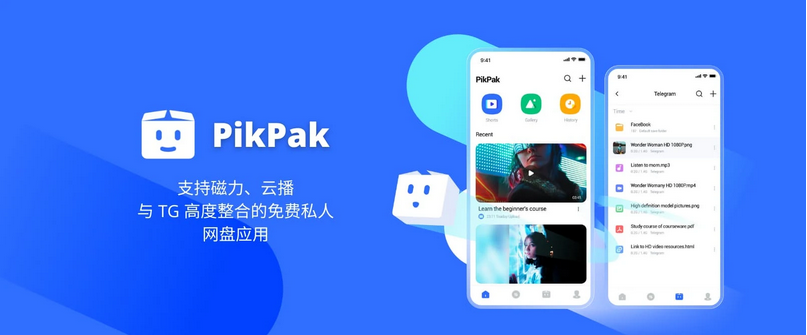
推荐阅读:
[AI-人工智能]免翻墙的AI利器:樱桃茶·智域GPT,让你轻松使用ChatGPT和Midjourney - 免费AIGC工具 - 拼车/合租账号 八折优惠码: AIGCJOEDISCOUNT2024
[AI-人工智能]银河录像局: 国内可靠的AI工具与流媒体的合租平台 高效省钱、现号秒发、翻车赔偿、无限续费|95折优惠码: AIGCJOE
[AI-人工智能]免梯免翻墙-ChatGPT拼车站月卡 | 可用GPT4/GPT4o/o1-preview | 会话隔离 | 全网最低价独享体验ChatGPT/Claude会员服务
[AI-人工智能]边界AICHAT - 超级永久终身会员激活 史诗级神器,口碑炸裂!300万人都在用的AI平台
本文介绍了Linux驱动开发的基础知识,旨在帮助初学者快速入门并掌握Linux驱动开发技巧。内容包括Linux驱动开发的基本概念、开发环境搭建、实战案例解析等,助力读者深入了解并应用于实际项目中。
本文目录导读:
Linux驱动开发是嵌入式系统开发中的重要组成部分,对于想要从事嵌入式系统开发或者提高Linux系统编程能力的人来说,掌握Linux驱动开发至关重要,本文将为您详细介绍Linux驱动开发的基础知识,帮助您快速入门。
Linux驱动开发概述
1、Linux驱动的作用
Linux驱动是连接硬件和操作系统的桥梁,它负责管理硬件设备,使得上层应用程序可以通过标准的API与硬件设备进行通信,驱动程序通常分为字符设备驱动、块设备驱动和网络设备驱动三种类型。
2、Linux内核模块
Linux内核模块是可以在不重启内核的情况下动态加载和卸载的代码片段,编写驱动程序时,我们通常将其编写为内核模块的形式。
开发环境搭建
1、安装Linux操作系统
Linux驱动开发需要在Linux环境下进行,因此首先需要安装一个Linux操作系统,如Ubuntu、Fedora等。
2、安装编译工具
在Linux环境下,需要安装编译工具,如gcc、make等,可以使用以下命令安装:
sudo apt-get install build-essential
3、获取Linux内核源码
获取Linux内核源码,以便编译和调试驱动程序,可以从Linux内核官方网站下载源码:
wget https://cdn.kernel.org/pub/linux/kernel/v5.x/linux-5.x.tar.xz
4、配置内核
配置内核,选择合适的编译选项,可以使用以下命令:
make menuconfig
5、编译内核
编译内核,生成内核映像文件:
make make modules
6、安装内核模块
将编译好的内核模块安装到系统中:
sudo make modules_install
Linux驱动开发基础
1、设备驱动框架
Linux设备驱动框架包括以下几个部分:
- 设备驱动:负责具体硬件设备的驱动程序。
- 设备文件:用于表示硬件设备的文件,通常位于/dev目录下。
- 设备类:用于管理具有相同功能的设备。
- 设备驱动模型:用于管理和组织设备驱动程序。
2、设备驱动编写流程
编写设备驱动程序通常包括以下几个步骤:
- 创建内核模块:使用module_init()和module_exit()宏。
- 注册设备:使用device_register()函数。
- 实现设备操作:如open()、read()、write()等。
- 卸载设备:使用device_unregister()函数。
3、设备驱动调试
在开发过程中,调试是必不可少的环节,可以使用以下方法进行调试:
- 打印信息:使用printk()函数。
- 调试工具:如kgdb、jtag等。
实例分析
下面将通过一个简单的字符设备驱动程序实例,介绍Linux驱动开发的流程。
1、创建内核模块
#include <linux/module.h>
#include <linux/kernel.h>
#include <linux/fs.h>
MODULE_LICENSE("GPL");
MODULE_AUTHOR("Your Name");
MODULE_DESCRIPTION("A simple char driver");
static int __init simple_init(void) {
printk(KERN_INFO "Simple driver init
");
return 0;
}
static void __exit simple_exit(void) {
printk(KERN_INFO "Simple driver exit
");
}
module_init(simple_init);
module_exit(simple_exit);2、注册设备
#include <linux/cdev.h>
#include <linux/fs.h>
#include <linux/uaccess.h>
#define DEVICE_NAME "simple_char_dev"
static int major;
static struct class* simple_class = NULL;
static struct cdev simple_cdev;
static int __init simple_init(void) {
major = register_chrdev(0, DEVICE_NAME, &simple_fops);
if (major < 0) {
printk(KERN_ALERT "Registering char device failed with %d
", major);
return major;
}
simple_class = class_create(THIS_MODULE, DEVICE_NAME);
if (IS_ERR(simple_class)) {
unregister_chrdev(major, DEVICE_NAME);
return PTR_ERR(simple_class);
}
cdev_init(&simple_cdev, &simple_fops);
if (cdev_add(&simple_cdev, MKDEV(major, 0), 1) < 0) {
class_destroy(simple_class);
unregister_chrdev(major, DEVICE_NAME);
return -1;
}
device_create(simple_class, NULL, MKDEV(major, 0), NULL, DEVICE_NAME);
return 0;
}
static void __exit simple_exit(void) {
device_destroy(simple_class, MKDEV(major, 0));
cdev_del(&simple_cdev);
class_destroy(simple_class);
unregister_chrdev(major, DEVICE_NAME);
}3、实现设备操作
static int simple_open(struct inode *inode, struct file *file) {
printk(KERN_INFO "Simple device opened
");
return 0;
}
static ssize_t simple_read(struct file *file, char *user_buffer, size_t len, loff_t *offset) {
printk(KERN_INFO "Simple device read
");
return 0;
}
static ssize_t simple_write(struct file *file, const char *user_buffer, size_t len, loff_t *offset) {
printk(KERN_INFO "Simple device write
");
return len;
}
static int simple_release(struct inode *inode, struct file *file) {
printk(KERN_INFO "Simple device released
");
return 0;
}
static struct file_operations simple_fops = {
.open = simple_open,
.read = simple_read,
.write = simple_write,
.release = simple_release,
};Linux驱动开发是嵌入式系统开发的核心内容,掌握Linux驱动开发有助于提高嵌入式系统的开发能力,本文介绍了Linux驱动开发的基础知识,包括开发环境搭建、设备驱动框架、设备驱动编写流程等,并通过一个简单的字符设备驱动程序实例,详细介绍了Linux驱动开发的步骤,希望本文对您有所帮助。
关键词:Linux驱动开发, 内核模块, 设备驱动, 字符设备驱动, 块设备驱动, 网络设备驱动, 内核源码, 编译工具, 设备驱动框架, 设备驱动编写流程, 设备驱动调试, 模块注册, 模块卸载, 设备操作, 设备创建, 设备销毁, 文件操作, 内核API, 内核编程, 嵌入式系统开发, 驱动程序实例, 设备驱动模型, 设备文件, 设备类, 设备驱动调试工具, 设备驱动编程规范, 设备驱动编程技巧, 设备驱动开发经验, Linux内核编程, 内核模块编程, 设备驱动编程实践, Linux驱动开发教程, Linux驱动开发入门, Linux驱动开发指南, Linux驱动开发实战, Linux驱动开发技巧, Linux驱动开发心得, Linux驱动开发案例, Linux驱动开发总结, Linux驱动开发学习笔记, Linux驱动开发进阶, Linux驱动开发高级技巧, Linux驱动开发常见问题, Linux驱动开发解决方案, Linux驱动开发资料, Linux驱动开发工具, Linux驱动开发环境配置, Linux驱动开发注意事项, Linux驱动开发实践总结, Linux驱动开发面试题, Linux驱动开发面试技巧, Linux驱动开发必备知识, Linux驱动开发必备技能, Linux驱动开发必备工具, Linux驱动开发必备书籍, Linux驱动开发必备教程, Linux驱动开发必备资料, Linux驱动开发必备网站, Linux驱动开发必备论坛, Linux驱动开发必备社区, Linux驱动开发必备问答, Linux驱动开发必备交流群, Linux驱动开发必备群组, Linux驱动开发必备讨论区, Linux驱动开发必备学习资源, Linux驱动开发必备学习资料, Linux驱动开发必备学习工具, Linux驱动开发必备学习网站, Linux驱动开发必备学习论坛, Linux驱动开发必备学习社区, Linux驱动开发必备学习交流群, Linux驱动开发必备学习群组, Linux驱动开发必备学习讨论区, Linux驱动开发必备学习问答, Linux驱动开发必备学习资源, Linux驱动开发必备面试经验, Linux驱动开发必备面试题库, Linux驱动开发必备面试技巧总结, Linux驱动开发必备面试攻略, Linux驱动开发必备面试准备, Linux驱动开发必备面试心得, Linux驱动开发必备面试案例分析, Linux驱动开发必备面试经验分享, Linux驱动开发必备面试技巧分享, Linux驱动开发必备面试技巧讲解, Linux驱动开发必备面试技巧实战, Linux驱动开发必备面试技巧总结, Linux驱动开发必备面试技巧提升, Linux驱动开发必备面试技巧训练, Linux驱动开发必备面试技巧应用, Linux驱动开发必备面试技巧案例, Linux驱动开发必备面试技巧实战案例, Linux驱动开发必备面试技巧心得, Linux驱动开发必备面试技巧分享经验, Linux驱动开发必备面试技巧分享技巧, Linux驱动开发必备面试技巧分享心得, Linux驱动开发必备面试技巧分享实战, Linux驱动开发必备面试技巧分享案例, Linux驱动开发必备面试技巧分享总结, Linux驱动开发必备面试技巧分享技巧, Linux驱动开发必备面试技巧分享心得, Linux驱动开发必备面试技巧分享实战, Linux驱动开发必备面试技巧分享案例, Linux驱动开发必备面试技巧分享总结, Linux驱动开发必备面试技巧分享技巧, Linux驱动开发必备面试技巧分享心得, Linux驱动开发必备面试技巧分享实战, Linux驱动开发必备面试技巧分享案例, Linux驱动开发必备面试技巧分享总结, Linux驱动开发必备面试技巧分享技巧, Linux驱动开发必备面试技巧分享心得, Linux驱动开发必备面试技巧分享实战, Linux驱动开发必备面试







本文标签属性:
Linux驱动:linux驱动开发
开发入门:开发入门书籍
Linux驱动开发入门:linux驱动开发入门与实战pdf




